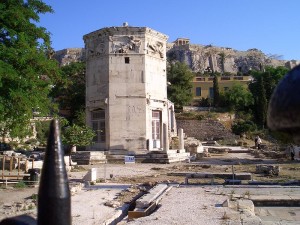A Community for Curious Minds who love History, its Odd Stories, and Good Reads
A Community for Curious Minds who love History, its Odd Stories, and Good Reads
By Holly Tucker
 Living in Athens years ago, I’d grab a souvlaki for lunch and head for a favorite spot. On the steps of the Parthenon (an option now impossible). Or near an 8-sided marble tower below the Acropolis.
Living in Athens years ago, I’d grab a souvlaki for lunch and head for a favorite spot. On the steps of the Parthenon (an option now impossible). Or near an 8-sided marble tower below the Acropolis. 